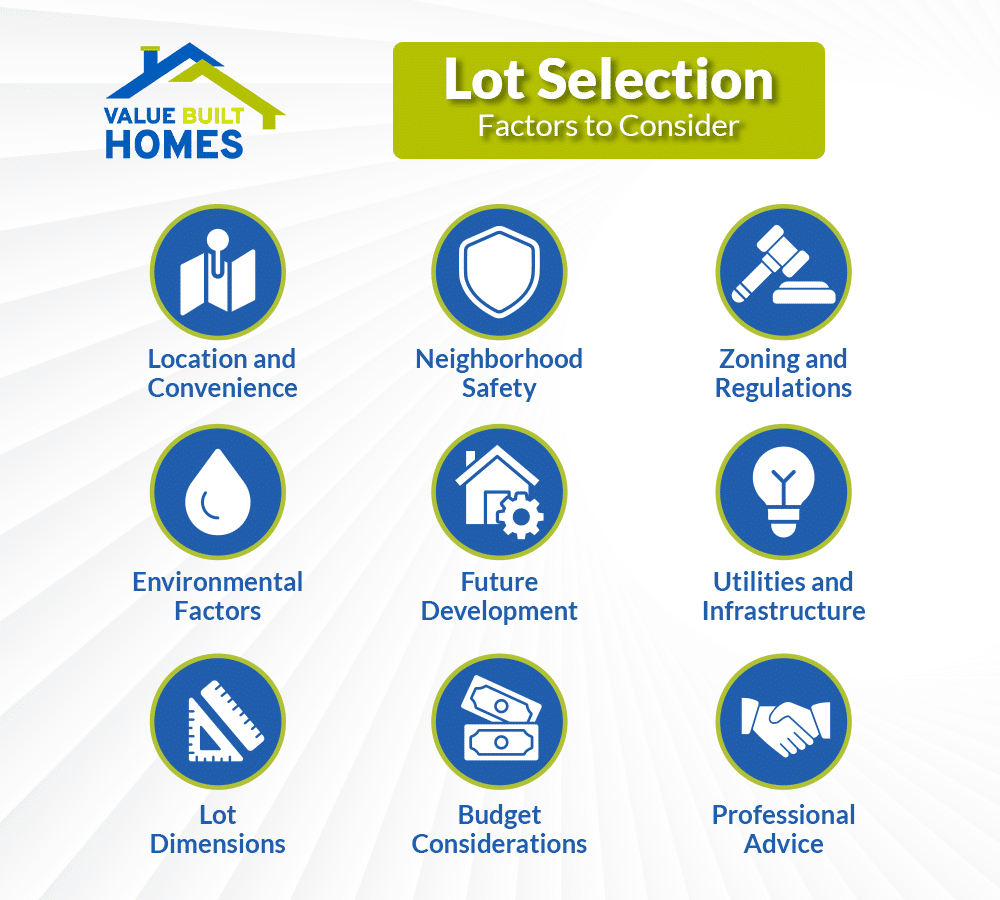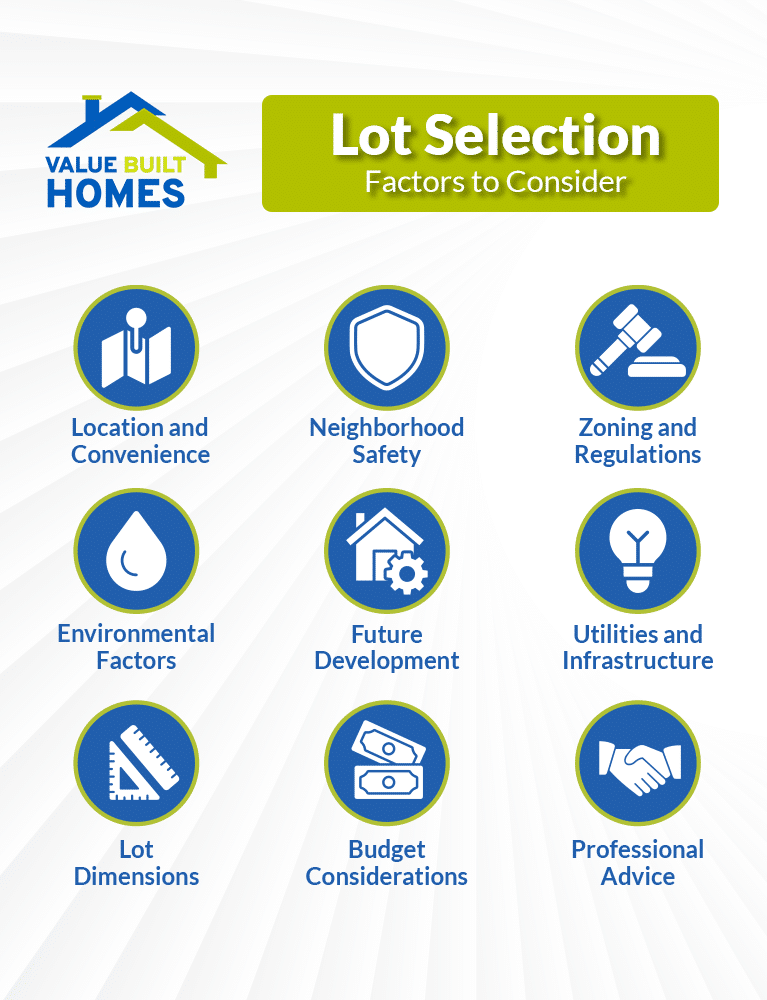The journey to building your dream home starts with choosing the right piece of land. Selecting the ideal lot not only provides a foundation for your future home but also influences daily convenience, long-term satisfaction, and property value. For first-time homebuyers and families alike, making an informed decision about land selection is crucial.
This article offers clear, practical guidance on key factors—from location and zoning to environmental concerns and future growth—ensuring that you choose a lot that aligns with your lifestyle and budget.
Location Considerations
Location is perhaps the most critical aspect when choosing a lot. Begin by assessing the proximity to essential amenities such as work, schools, healthcare, and shopping centers. Additionally, if school quality is a top priority, you can check official district performance data from Indiana Department of Education.
A great location can enhance daily convenience and boost long-term property value. Consider traffic patterns, access to public transportation, and neighborhood safety by reviewing local crime statistics and visiting at different times of day. Also, evaluate the community atmosphere and future neighborhood changes that might affect your quality of life. A well-chosen location should support both your current needs and your long-term plans, making it a sound investment for years to come.
Zoning Laws, Regulations, and Restrictions
Understanding local zoning laws and regulations is essential for ensuring that your envisioned home can be built on the selected lot. Zoning rules determine how the land may be used and what types of structures can be constructed. Start by checking local resources for general guidelines and to learn about regional planning efforts. Research whether the lot is strictly residential or if it permits mixed-use developments. Familiarize yourself with building codes, setback requirements, and any homeowners association (HOA) rules that might affect the design or placement of your home. Carefully reviewing these regulations early in the process helps avoid unexpected complications and ensures that your construction plans align with local guidelines.
Environmental and Site-Specific Features
The physical characteristics of a lot can have a significant impact on construction and long-term maintenance. Start with an evaluation of the topography—flat or gently sloping land is typically preferable to areas with steep grades or irregular terrain, which can increase construction costs. Assess soil quality and drainage conditions to confirm that the ground is stable and suitable for building. For flood risk assessment, consult official FEMA flood maps to identify potential hazards. Be aware of other environmental risks such as wildfire areas. Additionally, consider how the local climate will influence your home design, from insulation needs in colder areas to moisture control techniques in humid regions. A comprehensive environmental evaluation ensures your home will be both safe and sustainable.
Future Development and Long-Term Value
When planning for your future, it is vital to consider the potential for neighborhood growth and development. Investigate any planned infrastructure projects, commercial developments, or community improvements in the area. Check real estate market trends to gain insight into how the area might evolve over time. Such developments can enhance property values and improve quality of life, but be mindful that not all new projects have positive outcomes—some may introduce unwanted traffic or noise.
Analyze market trends and the level of community investment to gauge whether the area is on an upward trajectory. A lot in a neighborhood poised for growth can provide significant long-term value and resale potential.
Utilities and Infrastructure Availability
Access to essential services is a non-negotiable factor in a lot’s overall suitability. Ensure that the land has reliable connections to water, electricity, sewage, and natural gas systems. In some rural or developing areas, you might be faced with the need to install well or septic systems and extend utility lines, which can add to your expenses.
Equally important is the availability of modern connectivity, such as high-speed internet and cable services. Research the current state of local infrastructure and any planned upgrades, as these improvements can reduce future costs and enhance the livability of your home. A lot equipped with modern utilities promises a smoother and more cost-effective building process.
Lot Size, Shape, and Orientation
The dimensions and layout of your chosen lot are key considerations that directly affect your home’s design and functionality. Ensure the lot provides sufficient space for the intended floor plan and outdoor living areas, such as gardens or patios. An ideal lot not only meets your spatial requirements but also offers privacy and the potential for scenic views.
The shape of the lot can influence how design challenges are addressed; irregularly shaped lots may need creative architectural solutions. Orientation is equally important—position your home to take full advantage of natural light and energy efficiency, with living areas ideally facing south to capture sunlight. A well-proportioned and suitably oriented lot is essential for creating a comfortable, efficient home.
Budget and Financial Planning
Careful financial planning is critical when purchasing both land and constructing a home. Beyond the purchase price, consider additional expenses such as surveys, soil tests, site preparation, and permits. Hidden costs can quickly add up, so it is important to create a comprehensive budget that includes these factors. For those considering financing, land loans can have different requirements than home loans, often requiring a higher down payment or specific terms. By aligning your lot cost and associated expenses with your construction budget from the outset, you ensure that financial surprises do not derail your project. A solid, realistic budget ultimately sets the stage for a stress-free building experience.
Expert Guidance for Land Selection
Navigating the complexities of lot selection can be daunting, which is why expert guidance is invaluable. Consulting with a knowledgeable real estate agent can provide insights into the local market, highlight promising areas, and flag any potential issues with zoning or neighborhood trends. Land surveyors and inspectors offer essential on-site evaluations, ensuring that property boundaries are clear and that the land is free of hidden problems such as erosion or drainage issues.
Builders, particularly those experienced with cost-effective and energy-efficient construction, can assess the lot’s suitability for standardized home designs. Their input can simplify the planning process and help you avoid costly mistakes.
For additional insights, visit the Value Built Homes Blog, where you’ll find resources on topics like site-built homes and energy-efficient building. Leveraging professional expertise empowers you to make a confident, well-informed decision.
Summarized Checklist: Key Factors to Consider When Selecting a Lot


- Location and Convenience: Proximity to work, schools, and essential amenities. Refer to Indiana Department of Education data if school quality is a priority.
- Neighborhood Safety: Research local crime statistics and visit at different times of day.
- Zoning and Regulations: Verify zoning laws, building codes, and HOA rules through local planning associations.
- Environmental Factors: Assess topography, soil quality, drainage, and flood risks.
- Future Development: Investigate planned projects and consider overall market trends.
- Utilities and Infrastructure: Confirm access to water, electricity, gas, sewage, and internet.
- Lot Dimensions: Ensure the size, shape, and orientation support your design and energy needs.
- Budget Considerations: Account for land prices, preparation costs, and financing terms.
- Professional Advice: Consult real estate agents, surveyors, and builders for expert input.
Ready to Choose the Ideal Land for Your Home?
Selecting the right lot for your dream home is a critical step that sets the stage for your entire building journey. By focusing on location, zoning requirements, environmental suitability, and future growth, you can make an informed choice that aligns with both your present needs and long-term ambitions. Comprehensive planning and professional guidance are key to avoiding pitfalls and ensuring that the lot you choose supports a sustainable, high-quality home.
Ready to move forward? Reach out to a trusted real estate professional or contact Value Built Homes for expert assistance. With the right advice, you can navigate the lot selection process confidently and take the first step toward building a home that is energy-efficient, cost-effective, and perfectly tailored to your lifestyle.




